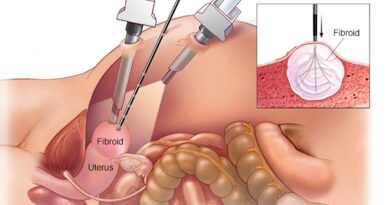Unusual Symptoms of Celiac Disease
Celiac disease is a serious autoimmune disorder that affects the digestive system. People with celiac disease cannot tolerate gluten, a protein found in wheat, rye, and barley. Gluten is found in many foods, including breads, pastas, cereals, and desserts.
When people with celiac disease eat foods containing gluten, their immune system reacts by damaging the lining of the small intestine. This can lead to malabsorption of nutrients, weight loss, bloating, diarrhea, and fatigue. Celiac disease is often diagnosed in children or adults after they experience gastrointestinal symptoms or other problems associated with poor absorption of nutrients.
However, some people with celiac disease may not have any symptoms at all.
Celiac Disease Signs & Symptoms | Nutrient Deficiencies & Why Symptoms Happen
Celiac disease is a chronic autoimmune disorder that affects the digestive system. When people with celiac disease eat gluten, their body produces an immune response that damages the lining of the small intestine. This can lead to a variety of symptoms, including abdominal pain, bloating, diarrhea, and weight loss.
While these are the most common symptoms of celiac disease, there are many other less-known signs and symptoms that can be associated with the condition. Here are five unusual symptoms of celiac disease that you may not be aware of:
1. Fatigue
Celiac disease can cause fatigue for a number of reasons. First, the damage to the small intestine caused by gluten consumption can lead to malabsorption of nutrients, which can lead to fatigue. Additionally, Celiac Disease Foundation notes that “the inflammation associated with celiac disease may also contribute to feelings of fatigue.”
If you’re always feeling tired and don’t know why, it could be worth getting tested for celiac disease.
2. Skin rash
A skin rash called dermatitis herpetiformis is often one of the first signs of celiac disease.
The rash typically appears as small blisters or bumps on the elbows, knees, buttocks, or back. It can be itchy and painful, but it usually goes away after starting a gluten-free diet. However, even if the rash disappears, it’s important to continue following a gluten-free diet since dermatitis herpetiformis is often a sign that more serious damage is being done to the intestines.
Hidden Symptoms of Celiac Disease
Celiac disease is an autoimmune disorder that affects the digestive system. When people with celiac disease eat gluten, a protein found in wheat, rye, and barley, their immune system reacts by damaging the lining of the small intestine. This can lead to a host of symptoms, including abdominal pain, bloating, diarrhea, fatigue, and weight loss.
But celiac disease isn’t just a digestive disorder. It can also cause a wide range of other problems outside the gut—problems that are often overlooked or mistaken for other conditions. Here are some of the lesser-known symptoms of celiac disease:
Anemia: Celiac disease can cause iron deficiency anemia because damage to the small intestine interferes with absorption of this nutrient. Anemia may cause fatigue, pale skin, and weakness.
Bone and joint pain: Joint pain and osteoporosis are both associated with celiac disease.
The bone loss is thought to be caused by vitamin D deficiency or inflammation from the immune reaction to gluten.
Depression and anxiety: Celiac disease has been linked with depression and anxiety disorders. The exact connection is not clear but may be related to nutrient deficiencies or damage to the nervous system from gluten exposure.
Dermatitis herpetiformis: This itchy skin rash is a telltale sign of celiac disease. The rash typically appears on the elbows, knees, buttocks, back, or face and is made up of tiny blisters filled with fluid. Dermatitis herpetiformis can precede gastrointestinal symptoms by many years—or may never develop at all in some people with celiac disease.
300 Symptoms of Celiac Disease
Celiac disease is a serious autoimmune disorder that affects the digestive system. When people with celiac disease eat gluten, a protein found in wheat, rye and barley, their bodies mount an immune response that attacks the small intestine. This damage to the small intestine prevents it from absorbing nutrients properly, which can lead to malnutrition and other health problems.
There are more than 300 symptoms of celiac disease, which can make diagnosis difficult. The most common symptoms are gastrointestinal, including diarrhea, constipation, bloating and gas. Other common symptoms include fatigue, joint pain, headaches and depression.
Celiac disease can also cause skin rashes and mouth ulcers.
If you think you may have celiac disease, it’s important to see a doctor for testing. There is no cure for celiac disease but following a gluten-free diet can help manage symptoms and prevent further damage to the intestines.
Celiac Disease Symptoms in Females
Celiac disease is a disorder that affects the digestive system. People with celiac disease cannot eat gluten, which is a protein found in wheat, barley, and rye. Gluten is found in many foods, including breads, pastas, cereals, and baked goods.
When people with celiac disease eat foods that contain gluten, their immune system reacts by damaging the lining of the small intestine. This damage prevents the small intestine from absorbing nutrients from food properly.
The symptoms of celiac disease can vary from person to person.
Some people have very mild symptoms while others may have more severe symptoms. The most common symptom of celiac disease is abdominal pain or cramping. Other symptoms may include bloating, diarrhea, constipation, gas, fatigue, weight loss or gain , anemia , bone or joint pain , depression , anxiety , and headaches .
Most people with celiac disease are diagnosed as children or young adults but the condition can develop at any age . Females are more likely to be diagnosed with celiac disease than males but it is not clear why this is the case . There are also certain genetic factors that make someone more likely to develop celiac disease .
If you have a family member with celiac disease , you have a higher risk of developing the condition yourself .
If you think you might have celiac disease , it’s important to see your doctor for a diagnosis . A blood test can check for specific antibodies that are associated with Celia c Disease .
If these antibodies are present in your blood , it’s likely that you have celiac disease and will need to follow a gluten-free diet .
Late Onset Celiac Disease
Late-onset celiac disease is a form of the autoimmune disorder that can occur in adults. It is caused by an intolerance to gluten, which is found in wheat, rye and barley. When someone with celiac disease consumes gluten, their immune system reacts by damaging the small intestine.
This can lead to a variety of symptoms including abdominal pain, bloating, diarrhea, weight loss and fatigue.
There is no cure for celiac disease, but it can be managed by following a strict gluten-free diet. This means avoiding all foods that contain gluten as well as any products that may have been contaminated with gluten during manufacturing or processing.
For some people with milder forms of the disease, this may mean simply cutting back on foods that contain high levels of gluten such as breads and pastas. However, for others who are more sensitive to even trace amounts of gluten, complete avoidance is necessary in order to prevent symptoms and further damage to the intestines.
While there is currently no way to prevent celiac disease from developing, researchers are working on developing a vaccine that could one day offer protection against the condition.
In the meantime, if you think you may be at risk for celiac disease (due to family history or other factors), it’s important to speak with your doctor so you can be properly tested and diagnosed.
How I Knew I Had Celiac Disease
For a long time, I thought that my digestive problems were just a normal part of life. I would get stomach aches and bloating after eating certain foods, and I always assumed that it was just because my body didn’t agree with those particular foods. It wasn’t until recently that I realized that there might be something more going on.
I had always heard of celiac disease, but I never really knew what it was. I decided to do some research and discovered that celiac disease is an autoimmune disorder that affects the digestive system. People with celiac disease are unable to eat gluten, which is a protein found in wheat, barley, and rye.
I started to notice that a lot of the symptoms of celiac disease matched up with what I was experiencing. For example, I would often have abdominal pain and bloating after eating bread or pasta. I also noticed that I was always tired and had trouble concentrating.
After doing some more research, I decided to get tested for celiac disease.
The test came back positive, and now I know for sure that I have celiac disease. It’s been a bit of an adjustment getting used to a gluten-free diet, but it’s worth it knowing that my digestive problems are finally being caused by an actual medical condition and not just something “in my head”.
Celiac Mouth Symptoms
Celiac disease is an autoimmune disorder that affects the gastrointestinal tract. When people with celiac disease eat gluten, their immune system reacts by damaging the small intestine. This can lead to a variety of symptoms, including mouth ulcers.
Mouth ulcers are one of the most common oral manifestations of celiac disease. They can be very painful and make it difficult to eat or drink. Mouth ulcers are often the first sign of celiac disease, and they may be present even before other symptoms develop.
Most mouth ulcers heal on their own within a few weeks, but some people may experience recurring ulcers. Treatment for mouth ulcers usually involves avoiding foods that contain gluten. In some cases, your doctor may also prescribe medication to help reduce inflammation and pain.

Credit: www.pinterest.com
What Can Be Mistaken for Celiac Disease?
There are a few conditions that can be mistaken for celiac disease, as they share similar symptoms. These include:
Irritable Bowel Syndrome (IBS): IBS is a common gastrointestinal disorder that affects the large intestine.
Like celiac disease, IBS can cause abdominal pain, bloating, diarrhea, and constipation. However, IBS does not damage the intestines or lead to malabsorption of nutrients.
Crohn’s Disease: Crohn’s disease is an inflammatory bowel disease that can affect any part of the gastrointestinal tract.
Like celiac disease, Crohn’s disease can cause abdominal pain, weight loss, diarrhea, and fatigue. However, Crohn’s disease typically also causes fever and bloody stools. Additionally, while celiac disease only affects the small intestine, Crohn’s disease can affect any part of the GI tract from the mouth to the anus.
Ulcerative Colitis: Ulcerative colitis is another inflammatory bowel disease that is similar to Crohn’s Disease. It also causes abdominal pain, weight loss, diarrhea ,and fatigue . However , ulcerative colitis usually only affects the large intestine and rectum , whereas Crohn’s Disease can affect any part of the GI tract .
Additionally , ulcerative colitis typically causes blood in the stool , whereas this is less common in Crohn’s Disease .
Lactose Intolerance: Lactose intolerance is a condition in which people have difficulty digesting lactose – a sugar found in milk and other dairy products. People with lactose intolerance may experience symptoms such as abdominal pain , bloating , gas , diarrhea , and nausea after consuming dairy products .
While these symptoms are similar to those seen in celiac disease , lactose intolerance does not damage the intestines or lead to malabsorption of nutrients .
How Does Celiac Disease Make You Feel?
Celiac disease is an autoimmune disorder that affects the digestive system. When someone with celiac disease eats gluten, their body reacts by damaging the villi in the small intestine. The villi are tiny finger-like projections that line the small intestine and help to absorb nutrients from food.
Without healthy villi, a person with celiac disease cannot absorb nutrients properly, which can lead to a host of health problems.
The most common symptom of celiac disease is diarrhea, but other gastrointestinal symptoms include bloating, gas, abdominal pain, and constipation. Many people with celiac disease also experience fatigue, joint pain, headaches, and depression.
Because celiac disease can cause such a wide range of symptoms, it can be difficult to diagnose. A blood test for antigliadin antibodies or tissue transglutaminase antibodies is usually the first step in diagnosis. If these tests are positive, a biopsy of the small intestine will be done to confirm the diagnosis.
There is no cure for celiac disease at this time, but following a strict gluten-free diet is essential for managing the condition. This means avoiding all foods that contain wheat, barley, and rye – which can be found in many processed foods as well as some medications and supplements. For many people with celiac disease, going gluten-free can be challenging at first but eventually becomes second nature.
How Long Can You Have Celiac Disease Without Knowing?
Celiac disease is a condition in which the immune system reacts to gluten, a protein found in wheat, barley and rye. When someone with celiac disease eats gluten, the immune system reaction damages the small intestine and prevents it from absorbing nutrients from food. This can lead to malnutrition, anemia and other serious health problems.
Most people with celiac disease are diagnosed after they experience symptoms like abdominal pain, diarrhea or fatigue. However, it’s possible to have celiac disease without any symptoms at all. In fact, studies suggest that as many as 1 in 4 people with celiac disease are unaware that they have it.
There are a few reasons why someone might have undiagnosed celiac disease. First of all, not everyone who has celiac disease experiences symptoms. And even when symptoms do occur, they can be very mild and easily attributed to other conditions (like irritable bowel syndrome).
Furthermore, some people with celiac disease only experience symptoms when they eat large amounts of gluten-containing foods (like bread or pasta). This means that they may not connect their symptoms to gluten and thus never get tested for celiac disease.
If you think you might have celiac disease, the only way to know for sure is to get tested by a doctor.
Blood tests and intestinal biopsies can confirm the diagnosis. Once you’re diagnosed with celiac disease, following a strict gluten-free diet is the only way to manage the condition and protect your health long-term.
Where is the Pain With Celiac?
There is no one answer to this question as everyone experiences celiac differently. For some people, the pain may be in the stomach or intestines, while others may experience headaches, fatigue, or other body pains. The best way to determine where your pain is coming from is to speak with a doctor or dietitian who can help you figure out what might be causing it.
Conclusion
Celiac disease is a digestive disorder that damages the small intestine and prevents it from absorbing nutrients from food. People with celiac disease have an immune reaction to gluten, a protein found in wheat, barley, and rye. Gluten is found in many common foods, such as breads, pastas, cereals, and baked goods.
When people with celiac disease eat foods containing gluten, their immune system responds by damaging the tiny fingerlike projections (villi) that line the small intestine. Villi absorb nutrients from food as it passes through your digestive tract. If they are damaged or destroyed, your body can’t absorb important vitamins and minerals needed for good health.
Most people with celiac disease develop symptoms after eating foods containing gluten. The most common symptom is abdominal pain or cramping. Other symptoms include bloating , diarrhea , constipation , gas , fatigue , weight loss , and anemia .
In children, celiac disease may cause poor growth or failure to gain weight adequately . Celiac disease can occur at any age but is most often diagnosed in young adults and children .



